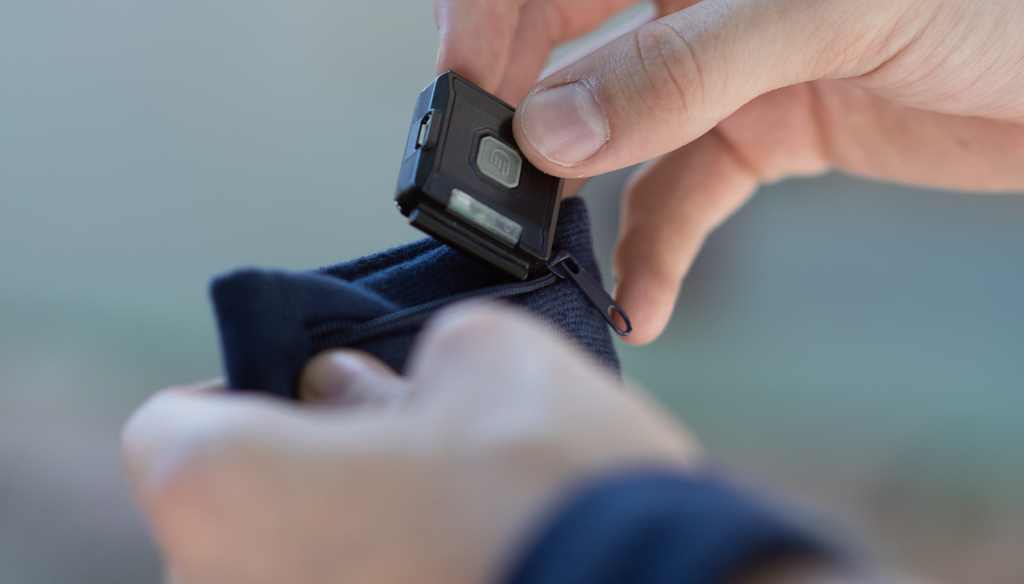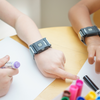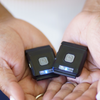USING TOUCHPOINTS IN THERAPY by Carron Montgomery, LPC, RPT, Level II EMDR certified

TouchPoints have become a staple when helping our clients create their own toolkits that help them grow and gain their calm and as part of therapy. As with most things, the more someone understands how something works and how it can benefit them directly, the more likely they are to use it. Kids are no exception!!! The first step in using Touchpoints is to introduce TouchPoints to them, let them experience it, and support their use. Without information, the vibrations may seem potentially confusing and unsettling, inadvertently creating more anxiety. Here’s how we explain the why of TouchPoints:
When we are triggered or become overwhelmed by emotions, particularly anxiety, we are likely to get stuck in the back of the brain or on the right side of our brain that controls more emotions and aren’t able to access helpful and true thoughts. TouchPoints free this fear response and the feeling out of control or stuck. The vibrations essentially talk to both sides of our brain to even it out, and let it know it can relax or focus. When our emotions are so big that we feel like we can’t use our brain in the way we want, TouchPoints can help our nervous system calm or focus, and use our brain in a helpful way again.
We love using the Sleep Bundle as the helpful bilateral vibrations can sometimes overwhelm individuals who are sensitive to sensory issues or are experiencing heightened anxiety, which can temporarily magnify a body's reactions to sensory input. The zippered sweatbands that come with the sleep set tempers the sound enough to balance out the added sensory input that can make some feel more restless and have trouble welcoming the helpful bilateral calming vibrations. Basically, bodies may initially resist an unfamiliar sensory input, which can ironically add to emotional intensity instead of reducing it. The soft sweatbands are also easy to wear on the ankles, out of more conscious awareness, which decreases the potential for distraction and allows handsto be free. If someone focuses on whether or not they are ”working” and continually check in on their “calm” level, this interferes with any tool or strategy designed to support calming our bodies and nervous systems.
Why TouchPoints in Therapy?
1. Use during EMDR (Eye Movement Desensitization and Reprocessing). Some clients may initially have difficulty tolerating EMDR. Wearing TouchPoints on the calm speed setting (BLUE) improves regulation and increases tolerance to EMDR while working through difficult topics. We further enhance nervous system regulation by inviting our clients – both kids and adults – to use Kwik Stix to express emotions and color back and forth and we play soothing music with binaural or bilateral beats in the background. All these activities allow clients to feel more emotionally safe to dive in and less scared of “what” might come up or that they are somehow doing it “wrong.”
2. Another example is having the child wear the TouchPoints on the calm speed setting (BLUE) while using the Simple Dimple, a Calm Strip, or other fidget involving bilateral movements, letting their brain feel safe enough to chew up the parts and let go of their old story that is no longer useful or helpful. Their body can also get rid of built-up energy that they have been holding onto that may be making them feel scared or yucky, like something bad might happen.
3. When addressing topics that can be emotionally overwhelming, difficult to talk about, or express, TouchPoints can support calming the nervous system. Clients feel more emotionally and physically safe, similar to having a calm and trusted adult in session with you who serves as a co-regulator. TouchPoints save time in the therapeutic process by helping children and adults stay regulated enough to wade into difficult topics more quickly. This is particularly helpful when having a primary caregiver or trusted adult in the room is not an option.
4. Sometimes adults have a difficult time hearing and handling the things that come up in session, making it difficult to stay regulated themselves, and be helpful. The TouchPoints can be used by the important adults in the child’s life to help them learn to tolerate distressing thoughts or behaviors that their children may share. Often an adult's response to hearing something that their child is struggling with dictates their level of distress and if they will choose to continue open communication or pull back, not wanting the added distress that their parent or parents are feeling.
5.Not surprisingly, kids with ADHD or anxiety often have excessive energy and trouble focusing during therapy. We often have kids with ADHD or those with excessive energy wear them in session to settle their bodies and help them focus during play, bibliotherapy, or other therapeutic activities.
6. Even some of our colleagues who are pediatricians and nurse practitioners use these in their offices for kids and teens who come in presenting with anxiety and depression. The TouchPoints can make the patients feel more at ease to discuss their concerns, and thus make assessment easier for providers
7. Wearing TouchPoints 15-30 min on the way to therapy is another way to help prepare children by allowing them to be in a calm state, which enhances their readiness and ability to learn these skills.
In sum, we have seen great benefits using TouchPoints both in our offices and outside of our offices. We wanted to share how kids, families, and professionals can get the most out of these tools to grow their calm. Let us know if you’ve used TouchPoints and what works for you to grow your calm.
Visit Touchpoints for more information and to check them out for yourself. Use code RIPTIDE for a discount!**
**We earn a small affiliate compensation. We only affiliate and recommend products that we use ourselves and find beneficial personally or professionally and have been recommending already!




